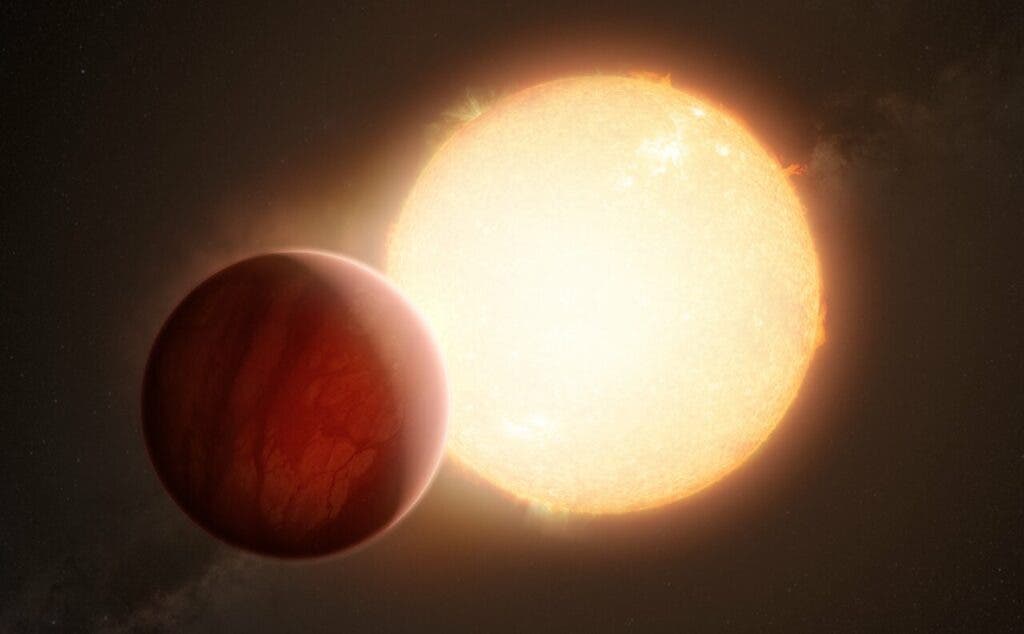Barium is the heaviest element one can find in an exoplanet’s atmosphere. Generally, barium, which is a soft and silvery alkaline Earth metal 2.5 times the weight of iron, is found in the lower layers of the atmosphere. However, that doesn’t appear to be the case for the ultra-hot gas giants WASP-76 b and WASP-121 b.
“The puzzling and counterintuitive part is: why is there such a heavy element in the upper layers of the atmosphere of these planets?” asks Tomás Azevedo Silva, a PhD student at the University of Porto and the Instituto de Astrofísica e Ciências do Espaço (IA) in Portugal who led the study published in Astronomy & Astrophysics.
Hot stuff
There aren’t many exoplanets like WASP-76 b and WASP-121 b. Both are referred to as ultra-hot Jupiters due to their size and the fact that their surfaces reach temperatures of over 1,800 degrees Fahrenheit (1,000 degrees Celsius). This is because they are so close to their host stars — so close that their orbits around their stars take only a couple of days. This gives these planets some unusual characteristics, such as the possibility of iron rain on WASP-76 b.
The detection of barium in the atmospheres of these two ultra-hot Jupiters hints that this class of planets may be even stranger than previously thought. Scientists are curious as to what natural process could place such a heavy element as barium at such high altitudes in these exoplanets. For instance, here on Earth, barium is sometimes added to fireworks to make them a bright green.
“Given the high gravity of the planets, we would expect heavy elements like barium to quickly fall into the lower layers of the atmosphere,” explains co-author Olivier Demangeon, a researcher also from the University of Porto and IA. ““At the moment, we are not sure what the mechanisms are.”
The team analyzed starlight that had been filtered through the atmospheres of WASP-76 b and WASP-121 b using the ESPRESSO instrument on ESO’s Very Large Telescope in Chile. This enabled the detection of several elements, including barium, that was previously obscure.
When it comes to studying the atmospheres of exoplanets, ultra-hot Jupiters are the most easily accessible laboratories. They are ideal targets for studying light transmitted through planetary atmospheres due to their size, large atmospheric scale heights, and proximity to their host stars.
Recent advances in high-resolution spectroscopy instruments, such as ESPRESSO, have made it possible to recover high-resolution planetary spectra from transit observations of ultra-hot Jupiters, giving us rare insights into the atmospheres of these extreme worlds. From the detection of chemical elements to evaporating atmospheres and the study of winds, resolving line features over short exposures has proven to be key to unraveling these distant alien atmospheres.
Ultimately, however, these new findings demonstrate that our understanding of the mysteries of exoplanets is still very limited. Astronomers will be able to learn more about the nature of exoplanets, both big and small, with the help of future instruments like the high-resolution ArmazoNes high Dispersion Echelle Spectrograph (ANDES), which will operate on ESO’s upcoming Extremely Large Telescope.










